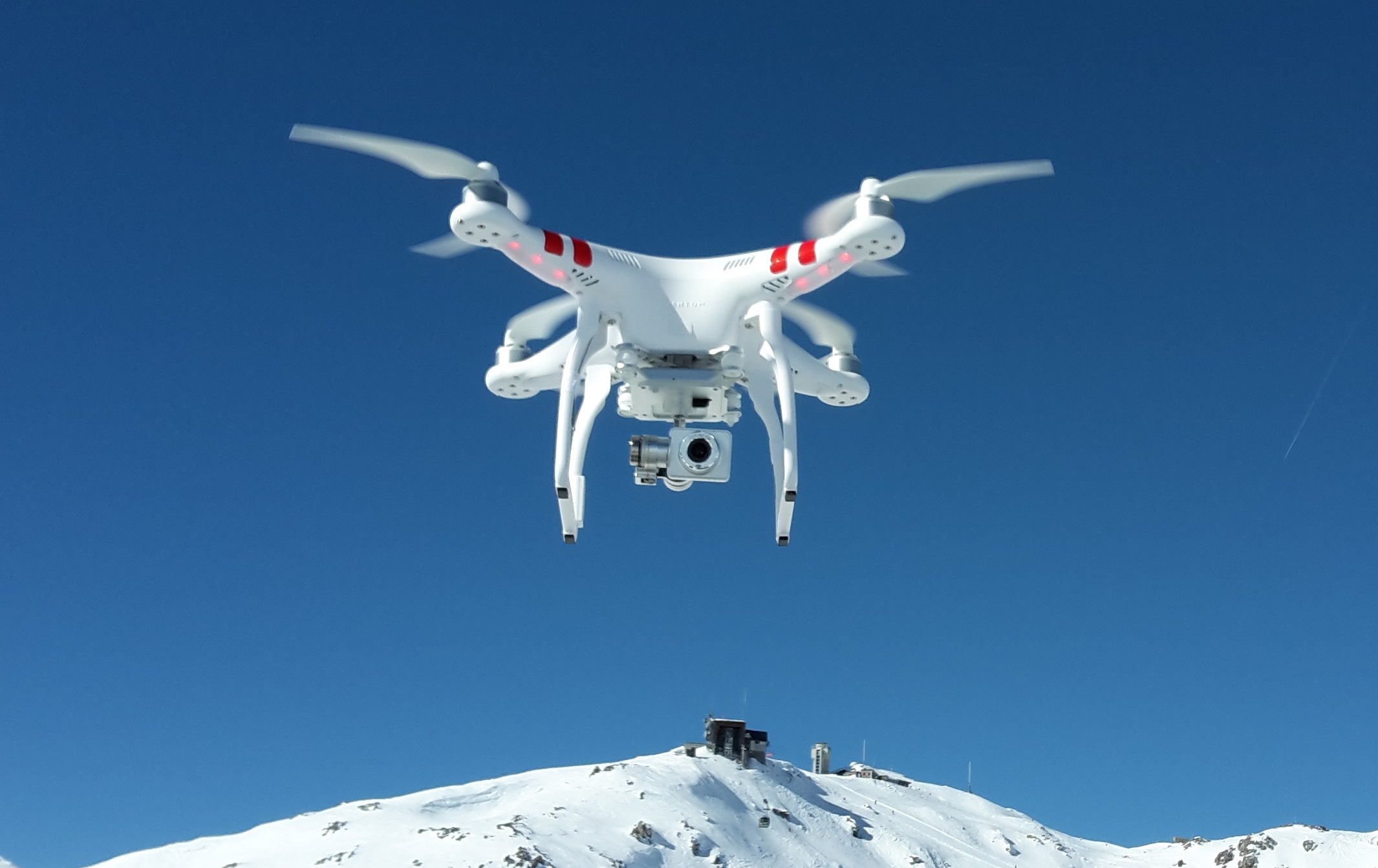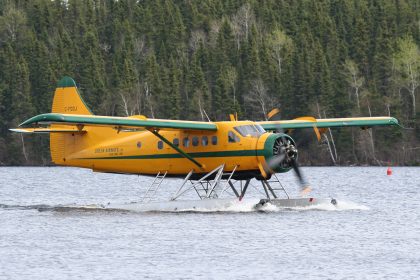Warbird pilot and airshow performer Alan Armstrong’s view of the world of UAVs. Click VOL 280 – OCT 2015 – DRONES to download the PDF version of this article
American government, both state and federal, is in chaos as it seeks to contain the explosion of unmanned aerial vehicles (UAVs/drones) being flown by inexperienced and untrained operators. Over the course of the first half of 2015, there were 650 reports of drone encounters by pilots, nearly three times the amount in 2014. These encounters occurred at altitudes of up to 10,000 feet. An investigative report by the Washington Post published August 20, 2015, revealed there were twelve undisclosed near collision incidents reported by pilots on August 16, alone. In August 2015, the Transportation Department’s Office of Inspector General said it would launch an audit to scrutinize the FAA’s procedures for allowing UAV operations in the National Airspace System. On August 27, 2015, a PA-23 was cruising at 2,500 feet near a Lewis University Airport and suffered damage to its horizontal stabilizer, including the rubber de-icing boot. The signatures of the impact were consistent with a small plastic propeller, the kind of propeller used on quadcopters. On September 30, 2015, the Georgia House of Representatives House Study Committee on the Use of Drones conducted hearings at the Georgia Tech Research Institute. Among those giving presentations at the Georgia Tech venue was Michael Wilson, the FAA Unmanned Aircraft Manager. Wilson noted there was an explosion in the drone population in America. For example, he indicated that 750,000 drones had been shipped to customers in the United States in 2015. Moreover, the forecast is for 1,000,000 drones to be sold during the Christmas season this year. Wal-Mart is currently offering 19 drones on its website, and Amazon is offering at least eight printed pages of drones showing 12 drones per page. Apparently, there will be a lot of fulfillment this Holiday Season. And how is the FAA responding to this explosion in the drone population?
The FAA’s Response – Educate Wal-Mart Sales Personnel
Rich Swayze, the FAA Assistant Administrator for Policy, International Affairs and the Environment indicated during the recent Airlines for America Commercial Aviation Industry Summit in Washington, D.C. that the FAA plans to send representatives to pre-Christmas staff meetings at the U.S. retail giant Wal-Mart to educate sales personnel about how to inform customers regarding safely operating UAVs. Respectfully, giving educational instruction to Wal-Mart sales personnel does not appear to be a meaningful response to the hazards the travelling public will encounter in the event a manned aircraft collides with a drone. The comments of Congressman Peter DeFazio (D-OR) seem to make more sense: “A lot of what pilots are seeing is irresponsible use of toys. The toys, in my opinion, should be set up so they can’t be sold unless they’re geo-fenced for altitude and perimeters.”
Drone Law 101
Normally, in order for an aircraft to be operated in United States airspace, the aircraft must meet certification standards to satisfy the requirements for the issuance of an airworthiness certificate, it must be registered with the FAA, it must be operated by an airman who meets the training and experience requirements imposed by the Federal Aviation Regulations, and the airman must hold a medical certificate, either Class 1, Class 2 or Class 3. Because UAVs have not been certified to meet the requirements for the issuance of an airworthiness certificate, if they are to be flown in public operations (e.g., law enforcement) or civil (commercial) operations, the operator must obtain from the FAA a Certificate of Authorization (COA). Public operations require the issuance of a COA, rules for operations detailed in the COA, and a self-certifying crew to operate the device. Civil operators may operate for commercial purposes as authorized in the FAA Modernization and Reform Act of 2012 (Pub.L. 112-95 §333). Commercial operators must obtain a grant of exemption before they can operate UAVs for profit. Most operators under §333 are engaged in film or television or in aerial data collection. Seventeen hundred §333 exemptions have been granted to civil (commercial) operators. The operator of the aircraft is required to have at least a recreational or sport pilot’s certificate, and the operator’s driver’s license can serve as his medical certificate. While there are regulations governing public operations and civil (commercial) operations, §336 of the FAA Modernization and Reform Act of 2012 governs hobby or recreational users. Hobby or recreational users are governed by FAA Advisory Circular 91-57A (September 2, 2015). There is no requirement for registration, training, or certification in any respect for hobby or recreational users of UAVs.
Click VOL 280 – OCT 2015 – DRONES to download the PDF version of this article
The Infrastructure Does Not Exist to Accommodate An Exploding Volume of Drones
While it is true that in 2003, Congress directed that the next generation of air transportation would “accommodate a wide range of aircraft operations, including… “unmanned aerial vehicles…” The simple truth is that America, at this time, lacks the infrastructure to absorb millions of drones into the National Airspace System. Even FAA Assistant Administrator Rich Swayze has admitted: “A lot of people who don’t have a pilot background are operating these things in the airspace.” While an aircraft may be flown over an uncongested area at 500 feet above ground level, and while the FAA maintains as part of its policy that UAVs should not be flown above 400 feet above ground level, this 100 foot buffer is of little reassurance to pilots and passengers in navigable airspace in light of pilot reports of drones being flown as high as 10,000 feet. f one had a choice between the approach of Congressman DeFazio of technically limiting the altitudes and locations where UAVs may be flown in contrast to the plan of Assistant Administrator Swayze to educate sales personnel at Wal-Mart about UAV operations, the author would put his money on the DeFazio plan. It is no secret that UAVs do not have transponders that can be tracked by air traffic control. They do not have ADS-B (Automatic Dependent Surveillance – Broadcast) In or Out. That means pilots operating ADS-B equipped aircraft cannot electronically detect the presence of a UAV to avoid a collision. In all likelihood, due to their relatively small size, the average pilot of a powered aircraft will impact a UAV before he sees it. Furthermore, a UAV, which can weigh up to 55 pounds, will have a devastating impact on any aircraft. One needs only to recall the loss of U.S. Airways Flight 1549, an Airbus 320, which collided with Canadian geese after departing LaGuardia Airport. A twelve (12) pound goose striking an aircraft at 150 miles per hour generates the force of a one thousand pound weight dropped from a height of ten feet according to the Bird Strike Committee USA. Commercial jet aircraft are certified to continue flight after impacting a four pound bird. However, no one would seriously argue that a fifty-five (55) pound UAV cannot cause serious (if not catastrophic) damage to an airliner. And what happens if a fifty-five (55) pound UAV strikes a light aircraft? Be prepared to comb through a scattered wreckage path.
While the FAA Modernization and Reform Act of 2012 required the FAA to integrate unmanned aircraft vehicles into the National Airspace System, the simple fact is that presently America lacks the infrastructure to absorb the operations of over 1,000,000 drones. Conventional aircraft flown by pilots have navigational aids, airways, GPS systems, collision avoidance systems, approach lighting systems, transponders, air traffic control, air traffic control towers, and a whole host of safety features to ensure that aircraft do not collide with other aircraft while engaged in air transportation, air ambulance operations, search and rescue missions, flight training, and the host of activities that are performed by pilots flying conventional powered aircraft. On the other hand, unmanned aerial vehicles are not electronically visible to air traffic controllers or to the pilots of conventional powered aircraft. Since there is no infrastructure in place to ensure separation of UAVs from manned aircraft, this explosion in the population of UAVs can only portend collisions between powered aircraft and UAVs. It is that simple.
<!––nextpage––>
The UAV Business Lobby and the FAA’s Lack of Focus
Proponents of UAVs such as the Association for Unmanned Vehicle Systems International maintain that businesses in the UAV industry will create more than 100,000 jobs and $82 billion in economic impact during the first decade of their integration into the National Airspace System. The UAV industry is pressing the FAA to integrate UAVs into the National Airspace System even though the infrastructure does not presently exist to safely effect this integration. Again, we turn to the remarks of Richard Swayze, the FAA Assistant Administrator, who concedes the FAA’s focus on this issue is diffuse, since he declared: “One day it’s safety concerns, the next day it’s we’ve got to get these incorporated into the airspace as soon as possible, the next day it’s privacy concerns and the next day it’s security – are these things going to be armed? So, it’s really up and down.” And there you have it. The remarks of Administrator Swayze illustrate the chaos in which America finds itself in dealing with this drone crisis. There is no clear focus to protect conventional powered aircraft from an exploding population of UAVs under the control of unskilled owners/operators.
Click VOL 280 – OCT 2015 – DRONES to download the PDF version of this article
A Candid Assessment of the Danger
Hawaiian Airlines President Mark Dunkerley is more candid in his assessment about the threat presented to conventional aircraft by an exploding UAV population, since he remarked: “From an operating perspective, [small UAVs are] a very serious issue and there’s considerable concern that it’s going to end in tears…It’s not just in and around airports where drones present a danger to the traveling public. There are many areas outside of five miles of an airport where a drone conflict could occur.”A summit of U.S. military, Department of Homeland Security and FAA personnel confirmed the obvious: UAVs are weapon delivery systems. In an exercise that pitted $5,200.00 worth of UAVs against a convoy of armored vehicles, the UAVs won. More to the point, a DJI Phantom 2, a newer version of the same kind of UAV that landed at the White House, can carry three pounds of explosives.In Japan, a quadcopter carrying a radioactive payload was found on the roof of Prime Minister Shinzo Abe’s office. That prompted the Japanese government to set about drafting rules requiring people who purchase UAVs to register their names and addresses and ban overflights of the Imperial Palace, Diet, and Prime Minister’s office. In Japan, rules are being developed which will not permit licensed UAV operators to fly in densely populated areas and near airports. UAV manufacturers will be encouraged to develop operational programs that use GPS to limit flights from restricted areas. Offenders could face a fine of 500,000 yen ($4,000) and one year in prison.Japan is not unique in the concept of considering criminal penalties against errant UAV operators. In the wake of operators flying UAVs that interfered with firefighting efforts in California, Senate Bill 142 was presented to Governor Jerry Brown as a means of punishing such behavior with criminal sanctions. Governor Brown, citing burdens on hobbyists and commercial operators, vetoed the bill.
Abdication of Responsibility – The Origins of Chaos
The United States Government’s approach to this looming crisis is reactive, not proactive. Under the present policies and regulations, the only devices for keeping errant UAV operators in line are education, liability considerations and the threat of FAA enforcement action. For example, on October 6, 2015, the FAA announced the assessment of a $1,900,000.00 civil penalty against §333 commercial operator, Sky Pan International, Inc. of Chicago that was responsible for 65 unauthorized flights between March of 2012 and December of 2014. The operations were in some of the nation’s most congested airspace. Forty-three flights were in New York’s heavily restricted Class B airspace without air traffic control authorization. The UAVs lacked two-way radio communication, a transponder and altitude-reporting equipment. According to FAA Administrator Huerta, the operations are “illegal and can be dangerous.” The announcement came one day before an FAA official was to testify before the House Transportation and Infrastructure Committee about what the agency is doing to address safety hazards presented by UAVs flying too close to manned aircraft. The FAA has granted 1,700 exemptions to commercial operators that are supposed to know how to comply with the FAA airspace rules.The Department of Homeland Security and state and local law enforcement are working on systems to track and repel UAV incursions including a microwave device that will corrupt the UAV’s operating system and send the vehicle back to the operator. However, the operator may not be in visual line of sight (VLOS) but may be positioned in a vehicle guiding it via first person view (FPV). To be effective, the interdiction system must be able to identify the location of the operator. Apparently, the authorities are only able to identify operators in one out of ten sightings of illegal UAV activity reported in 2014. Only two percent of the violations actually led to enforcement action.The ability to weaponize a UAV would provide evocative content for a Tom Clancy novel, were he still alive. The prospect of UAVs being employed to deliver explosive fissionable material as well as biological agents must be matters of great concern to agencies of the United States Government. Clearly, the security technology is lagging behind UAV technology and the explosive growth in the UAV population. Furthermore, since UAV control systems involve computer software, there is the potential for the control system to be hacked or infected with malware.
Click VOL 280 – OCT 2015 – DRONES to download the PDF version of this article
Show Me the Money!
According to Teal Group, UAVs of all sizes and categories “continue as the most dynamic growth sector of the world aerospace industry.” World-wide UAV production will total $93 billion with an additional $30 billion on drone spending by the military. The market leader in small leader in small UAVs is Da-Jiang Innovations Science and Technology Company (DJI). DJI was founded in 2006 by Frank Wang. DJI reportedly has a worldwide workforce of 3,000 and its 2015 revenue is projected at $1 billion. Wang has stated his goal is to sell more than one million drones a year. According to the April issue of Forbes Magazine, DJI is seeking to raise investment of $10 billion which, if successful, will make Wang a billionaire. The impetus for the explosion in drone supply is driven by entrepreneurs like Wang and vendors, suppliers and maintenance facilities which will service, sell and maintain UAVs. This explains why the Association for Unmanned Vehicle Systems International and the Academy of Model Aeronautics dispatched a letter to FAA Administrator Huerta on September 30, 2015, alerting Administrator Huerta to the economic impact a burgeoning drone market can have on the American economy in the form of 100,000 jobs and $82 billion in economic impact during the first decade. Based upon the commercial and economic needs of UAV suppliers and distributors, the authors of the September 30, 2015, letter declared: “The FAA needs to assert its authority over the NAS (National Airspace System).” Absent from the letter to Administrator Huerta of September 30, 2015, was a meaningful discussion about how and in what manner infrastructure will be created and implemented to prevent collisions between manned aircraft and UAVs. The driving force to rush the implementation of drones into the National Airspace System is money. Without a coordinated infrastructure to prevent collisions between UAVs and manned aircraft, public safety in navigable airspace will be increasingly compromised by the exploding population of UAVs in the National Airspace System.
Conclusion
While the advocates for the operators, vendors and manufacturers of UAV systems are focused on the $82 billion UAV systems may inject into our moribund economy, the simple fact is that no one has put in place the necessary infrastructure to safely and in good conscience incorporate an exploding volume of unmanned aerial vehicles into the National Airspace System.It is worth mentioning that the Federal Aviation Administration was created by an act of Congress following the collision of two airliners over the Grand Canyon. One can only hope that the absence of meaningful technological impediments to the operations of UAVs in navigable airspace will not result in a similar tragedy and then finally arouse Congress and the FAA to address the importance of first creating an infrastructure for the operation of drones before the floodgates are opened with an explosion in sales of drones at Wal-Mart and Amazon.
Click VOL 280 – OCT 2015 – DRONES to download the PDF version of this article
About Alan Armstrong
E. Alan Armstrong is an aviation lawyer practicing in Atlanta, Georgia. Mr. Armstrong has written over one hundred articles on aviation law published in professional journals and periodicals. He is AV rated and listed in the Martindale-Hubbell Bar Register of Preeminent Lawyers. An active warbird pilot and airshow performer, Mr. Armstrong has represented numerous pilots accused of regulatory infractions in proceedings before the National Transportation Safety Board. The rights of aeronautical users to have non-discriminatory access to public use airports is an important part of his law practice, including Part 16 proceedings before the Federal Aviation Administration. Finally, Mr. Armstrong also handles business transactions, aircraft acquisitions, FAA enforcement issues, NTSB and civil litigation, as well as personal injury matters.
Contact Information
Phone (770) 451-0313
Fax (770) 451-0317
Email [email protected]
Other Projects
Japanese Bomber – Replica Nakajima Kate Bomber
Mr. Armstrong owns a Replica Kate Bomber based with the Commemorative Air Force in Peachtree City/Falcon Field, GA.You can view the Kate’s website at
http://www.japanesebomber.com
The Battle of Midway Re-Creation
Mr. Armstrong has also written a script on the Battle of Midway for re-enactment at airshow venues across the country. For more information please visit
http://www.midwayairbattle.com/
























